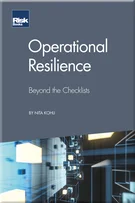Risk Management for M&A
Risk Management for M&A
Foreword
Introduction
Theory and Practice of Corporate Risk Management
Theory and Practice of Optimal Capital Structure
Introduction to Funding and Capital Structure
How to Obtain a Credit Rating
Refinancing Risk and Optimal Debt Maturity
Optimal Cash Position
Optimal Leverage
Introduction to Interest Rate and Inflation Risks
How to Develop an Interest Rate Risk Management Policy
How to Improve Your Fixed-Floating Mix and Duration
Interest Rates: The Most Efficient Hedging Product
Do You Need Inflation-linked Debt?
Prehedging Interest Rate Risk
Pension Fund Asset and Liability Management
Introduction to Currency Risk
How to Develop Currency Risk Management Policy
Translation or Transaction: Netting Currency Risks
Early Warning Signals
How to Hedge High Carry Currencies
Currency Risk on Covenants
Optimal Currency Composition of Debt 1: Protect Book Value
Optimal Currency Composition of Debt 2: Protect Leverage
Cyclicality of Currencies and Use of Options to Manage Credit Utilisation
Managing the Depegging Risk
Currency Risk in Luxury Goods
Introduction to Credit Risk
Counterparty Risk Methodology
Counterparty Risk Protection
Optimal Deposit Composition
Prehedging Credit Risk
xVA Optimisation
Introduction to M&A-related Risks
Risk Management for M&A
Deal-contingent Hedging
Introduction to Commodity Risk
Managing Commodity-linked Revenues and Currency Risk
Managing Commodity-linked Costs and Currency Risk
Commodity Input and Resulting Currency Risk
Offsetting Carbon Emissions
Introduction to Equity Risk
Hedging Dilution Risk
Hedging Deferred Compensation
Stake-building
This chapter will discuss risk management within the context of M&A. In such situations, companies often focus on deal execution first and funding second, while the risk management is the last priority. Our goal is to show how risk management can be an important part of the overall M&A process, and how it can be implemented.
What are the typical sources of risk related to risk management? There are several sources of financial risk one can identify in M&A transactions.
-
-
FX translation risk: When the acquisition changes the currency composition of assets, net investments in foreign companies will, upon conversion to the reporting currency, impact the equity of the consolidated company due to currency variability. Similarly for earnings. This can impact the leverage, which is often under pressure in M&A situations.
-
-
-
FX transaction risk: When the uses and sources of funds are not in the same currency, the company is exposed to currency transaction risk from the variability of the currency until the moment of payment or refinancing.
-
-
-
Interest rate risk: When the transaction is financed by a large amount of debt, the overall cost will depend
-
Copyright Infopro Digital Limited. All rights reserved.
As outlined in our terms and conditions, https://www.infopro-digital.com/terms-and-conditions/subscriptions/ (point 2.4), printing is limited to a single copy.
If you would like to purchase additional rights please email info@risk.net
Copyright Infopro Digital Limited. All rights reserved.
You may share this content using our article tools. As outlined in our terms and conditions, https://www.infopro-digital.com/terms-and-conditions/subscriptions/ (clause 2.4), an Authorised User may only make one copy of the materials for their own personal use. You must also comply with the restrictions in clause 2.5.
If you would like to purchase additional rights please email info@risk.net







